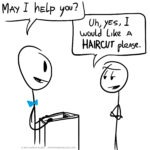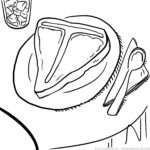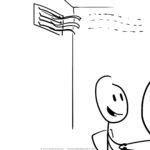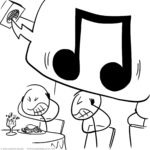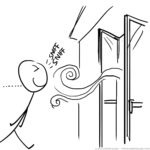A restaurant brand audit gets to the purpose, the promise, the personality, the positioning, and the “why” of a chain — the compelling vision that people are inspired by and want to play a role in helping effectuate. We’ve completed dozens of these projects, for companies around the globe. And despite how the companies might vary — by revenue, by size, by geography — we often come across a number of common restaurant mistakes, challenges, and opportunities.
These audits include a 300+ point inspection of a restaurant operation, during which we analyze hundreds of checkpoints covering all the major facets of a restaurant — operations, staffing, design, menus (the design, engineering, profitability, layouts, yields, turnover, etc), marketing, facilities, profitability, sales performance, etc. Throughout the process, we’re able to uncover where the restaurant is under-performing or out-performing industry standards (and what to do about it, of course). The below list — not in any particular order and certainly not all-inclusive — includes a slew of mistakes and findings that will be helpful to those considering their own restaurant improvement opportunities.
Common Service Mistakes and Missed Opportunities:
- Being greeted with “how many” or “do you want to sit in the dining room or bar” rather than a proper greeting, warm welcome, and playing the role of “host”
- Greeting with “May I help you?” – I often respond: “uh, yes, I would like a haircut please” to this
- Asking “just one?” instead of “will you be dining alone today?”
- Removing the diners drink to refill rather than replacing or refilling at the table
- Saying “no problem” instead of “my pleasure”
- Handling the top 1/3 of the glass or cup (should always handle bottom half only)
- Failing to pause long enough during initial greeting to make eye contact with each guest
- Using over-friendly and disrespectful names such as “dude”, “buddy”, “pal”
- Failing to recommend a favorite or popular item
- Being unfamiliar or dislikes the cuisine they serve (i.e. “oh, well, I don’t eat seafood”)
- Overuse of perfumes and colognes (guests should smell the cuisine, not the waiter)
- Gossiping or talking loudly about improper subjects in ear-shot of guests
- Sloppy uniforms, disheveled appearance, bar stamps still on hand from night before, etc
- Being ill-prepared (not bringing steak knife with steak, spoon with soup, etc)
- Failing to return within 1 minute after the entrée is delivered
- Inefficient staffing of stations (too much or too little can both be costly)
- Failing to offer to replenish beverages in a timely fashion (especially costly when it is that second $11 glass of wine that the customer would have ordered if offered at the right time)
- Allowing guests to leave the restaurant without being properly thanked (by the one who greeted them or someone other than the tip recipient)
- Remarks that embarrass or belittle a guest (like “guess you didn’t like that one, huh” when a guest finishes everything on their plate)
- Rewarding FOH (front of house) staff just on tenure rather than merit
Common Exterior Design & Facilities Maintenance Issues:
- Lack of sufficient signage or road visibility
- Restaurant concept isn’t clear from the exterior design/signage
- Right of Way issues that make it difficult to get to the restaurant during heavy traffic periods
- Insufficient parking
- Empty parking lot (lots of parking is good, unless there are no cars, then it’s a curse)
- No menu boards outside (or leaving old, tired, faded menus outside that should be replaced)
- Trash and debris within restaurant property line (should be cleaned multiple times per day)
- Run-down and tired looking exteriors
- Unsightly service areas visible to customers (garbage, dirty equipment/parts, etc)
- Lights out, no landscaping or deteriorating landscaping, entrance cluttered by third party
Common Interior Design & Facilities Errors: Walking inside a restaurant is like walking into the belly of an advertisement. Everything communicates. Unlike typical ads which often just engage one, two, or three senses maximum, a restaurant engages all five of the human senses. This raises the stakes substantially on customer expectations and performance levels necessary to compete effectively today.
- Cluttered host/greeting station
- Inefficient floor plans, wait stations, bar setups, and table configurations
- Clunky, dirty/dusty, or irrelevant decorations that don’t help tell the brand story
- Exposed service areas (buspans or trash overflowing, cluttered and disorganized, etc.
- Bathroom doors that push in rather than out (or don’t have trash can nearby exit)
- Acoustical issues (music or ambient noise too loud or too low)
- Spending too much money on linens or cleaning services which could be revamped
- Interior directional signage and zone merchandizing lacking or absent
- Inefficient use of space (storage, prep, service stations, POS stations, etc)
- Systems and controls for receiving, storing, and requisitioning expensive supplies and products
Common Menu Design Errors: We are able to consistently increase profits for any restaurant (whether an independent or national chain) by $1,000 per month, per million dollars in annual revenue just by re-engineering and designing the menus. This is without any increase in price – just adjusting the layout and design is worth $1k per-month, per-million in annual revenue. Think of yourself as a landlord and every item on your menu as a tenant – are all your renters paying their fair share? Here are a few things we frequently see:
- Haphazard placement of profitable items
- Overuse of dollar signs
- Chinese style menu pricing – item on left with….$price. Should be columns and nested pricing.
- No visible merchandizing – the menu should function as a tour guide of best signature items and those with the highest gross margin
- QSR or Fast Casual operators still using static boards versus migrating to digital (28% higher ROI)
- Too many or too few items
- Menu not on website or can’t be accessed from a mobile phone browser
- Physical menus overly susceptible to wear and tear (food, grease, tears, water stains, etc)
- Failing to conduct a competitive and profitability analysis at least twice per year
- Failing to update the menu and prices at least twice per year
- Building the menu based on what worked and was popular yesterday versus tomorrow
- Selling “like-items” that are competitively comparable
- Passing on LTO’s (“limited time offers” – which should be run every 4-12 weeks)
- Failing to have a specialty drink menu (even if you don’t serve alcohol there are opportunities)
- Printing too many menus thereby confusing/overwhelming customers
- Allowing staff to sell the menu before they have been adequately trained and tested
- Missing menu line item extensions by failing to properly analyze menu itemization reports
- Menu descriptions written by the chef (rather than by professional copywriter with assistance of the chef, key wait/service staff, and publicist)
- Inefficient layout or overuse of add-on prices for menu item variations
- Waiting too late to adjust or adjusting too fast to inventory price fluctuations
Common Marketing Errors: The average restaurant spends 3% of total revenue on marketing. While this is a generally acceptable amount to spend, what’s often far less agreeable is where to invest it. This list could easily be a mile long but here are a few of the more common big-picture mistakes we see:
- No formalized brand standards (brand promise, brand personality, brand positioning, brand story, brand usage guidelines, etc)
- No formal planning or budget; advertising based on which sales reps did the best job rather than a structured plan
- Not engaged in digital marketing or social media because it is intimidating or “too new”
- No coordinated or structured effort to generate publicity via media relations campaign
- Engaging in media relationship without training (either self-training or professional)
- No crisis communications plan in place
- Website is deficient or an afterthought (33% of customers visit website before choosing a restaurant to go to for the first time)
- Have not actively or sufficiently brainstormed methodology to drive word-of-mouth (techniques beyond just solid execution of operational basics)
- Use of non-food colors and designs in marketing materials
- Programs to build customer database absent or lacking – don’t know who their customers are
- DISCOUNTING
- Missed opportunities with “cause marketing”
- Overlooking relevant audiences (kids, dog owners, Millenials, special interest groups, etc)
- No zone merchandizing inside the restaurant
- No loyalty programs or frequency-building programs are lacking/deficient
- Focused on raising sales valley’s rather than peaks and building shoulders
- Overlooking opportunities for cooperative marketing, sponsorships, and other tools to build marketing budget by inviting partners and suppliers to help fund programs
- Missed opportunities for periphery sales (catering, in-store retail, off-premise retail, private parties during off-peak times, etc)
- Relying too heavily on comment cards (rather than research) to base big decisions or evaluate performance in the mind of the customers and employees
- Spending money on mass media advertising rather than new and more effective channels such as digital marketing, publicity, web search (SEO/SEM), publicity programs, viral marketing, improved training with use of technology, mobile marketing, etc.
In addition to the above thought-starters, I invite you to visit two blog posts: 10 ways to cut restaurant costs 10 ways NOT to cut restaurant costs Okay, like I said, this isn’t a fully inclusive list and not in any particular order, but I hope you find it helpful in just getting another perspective on common industry issues we see in the hundreds of restaurants we audit. If you have any questions or comments, please email me back. I would be delighted to select a few questions to answer publicly as part of a Q&A series. And, naturally, if you are interested in getting a no-holds-barred audit for your restaurant (whether 1 unit or 1,000), please let us know. We do a one-day program for independent restaurants and then do totally customized multi-day programs for chain restaurant operators.


